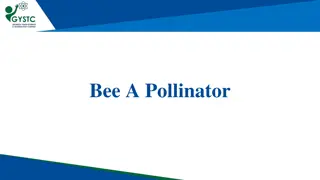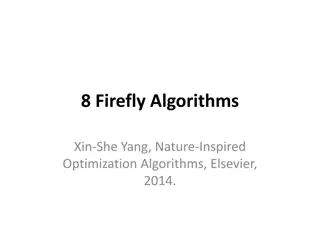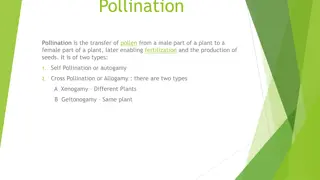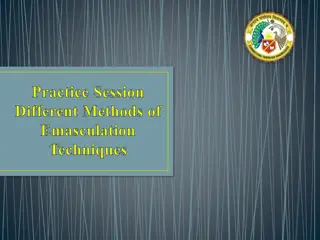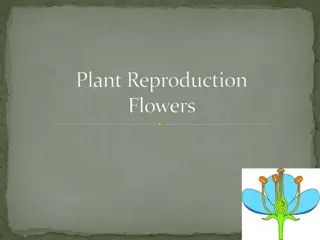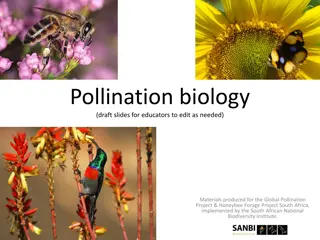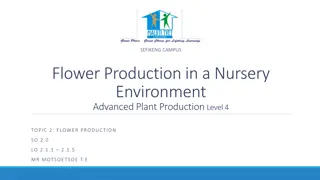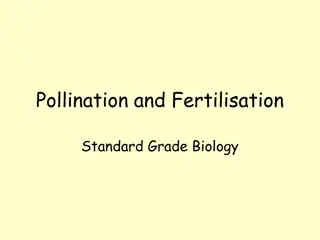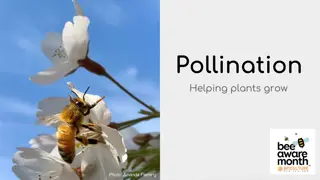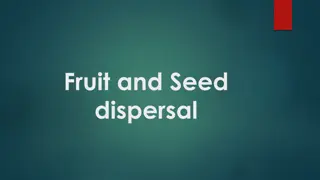Flower Pollination Algorithm: Nature-Inspired Optimization
Real-world design problems often require multi-objective optimization, and the Flower Pollination Algorithm (FPA) developed by Xin-She Yang in 2012 mimics the pollination process of flowering plants to efficiently solve such optimization tasks. FPA has shown promising results in extending to multi-objective optimization, providing approximations to Pareto fronts and enabling decision-makers to rank different options. Understanding the characteristics of flower pollination, whether abiotic or biotic, is crucial in appreciating the inspiration behind FPA's development. This algorithm leverages concepts from the natural world to enhance optimization techniques, ultimately offering solutions for complex and high-dimensional problems.
Download Presentation

Please find below an Image/Link to download the presentation.
The content on the website is provided AS IS for your information and personal use only. It may not be sold, licensed, or shared on other websites without obtaining consent from the author. Download presentation by click this link. If you encounter any issues during the download, it is possible that the publisher has removed the file from their server.
E N D
Presentation Transcript
11 Flower Pollination Algorithms Xin-She Yang, Nature-Inspired Optimization Algorithms, Elsevier, 2014.
The flower pollination algorithm (FPA) was developed by Xin-She Yang in 2012, inspired by the pollination process of flowering plants. FPA has been extended to multiobjective optimization with promising results.
11.1 Introduction Real-world design problems in engineering and industry are usually multi-objective or multi-criteria. Common approaches are to provide good approximations to the true Pareto fronts of the problem of interest so that decision makers can rank different options, depending on their preferences or their utilities [1,5,15].
For single objective optimization, the optimal solution can often be a single point in the solution space. A higher-dimensional problem can have an extremely complex hypersurface as its Pareto front.
11.2.1 Characteristics of Flower Pollination The main purpose of a flower is ultimately reproduction via pollination. Flower pollination is typically associated with the transfer of pollen, and such transfer is often linked with pollinators such as insects, birds, bats, and other animals. Pollination can be achieved by self-pollination or cross-pollination.
Pollination can take two major forms: abiotic and biotic. Bees and birds may exhibit L vy flight behavior with jump or fly distance steps obeying a L vy distribution.
11.2.2 Flower Pollination Algorithm FPA was developed by Xin-She Yang in 2012 [19], inspired by the flow pollination process of flowering plants. FPA has been extended to multi-objective optimization [20].
For simplicity, the following four rules are used: 1. Biotic and cross-pollination can be considered processes of global pollination, and pollen-carrying pollinators move in a way that obeys L vy flights. 2. For local pollination, abiotic pollination and self- pollination are used. 3. Pollinators such as insects can develop flower constancy, which is equivalent to a reproduction probability that is proportional to the similarity of two flowers involved. 4. The interaction or switching of local pollination and global pollination can be controlled by a switch probability p [0, 1], slightly biased toward local pollination.



